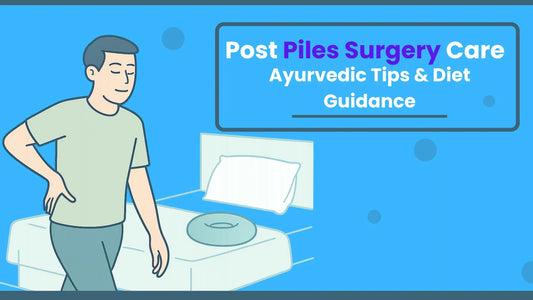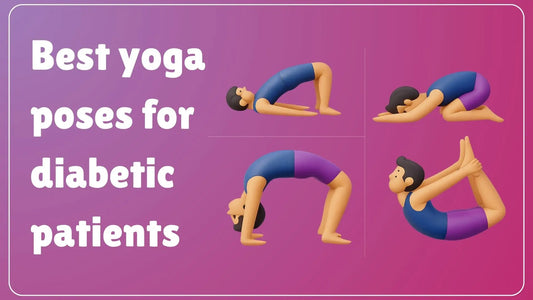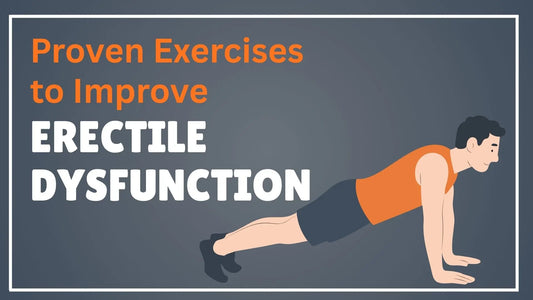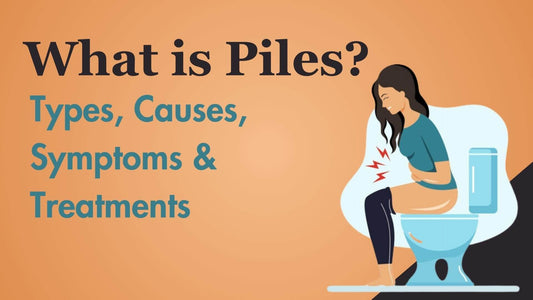
What is Piles? Types, Causes, Symptoms and Treatments
Piles or hemorrhoids may be a matter of botheration for anyone. It can be painful during the stool discharge or while sitting anywhere or doing any other body posture. And the worst situation happens when the person is not able to discharge the hard stool without bleeding. The blood vessels around the anus or within the anus get enlarged when the person exerts pressure to pass the hard stool. Hemorrhoids, external or internal, begin with someone undergoing the problem of constipation.
1 What are Piles?
Piles or hemorrhoids are enlarged blood vessels developed around or within the anal area, causing inflammation, bleeding and itching. After discharging the poo, one can find blood in the poo and you may notice the mucus in your underwear or on the toilet paper after cleaning the anal area.. It may occur in anyone in the late 50s or 60s or during the period of pregnancy when the connecting tissues lose the strength to support the blood vessels in the pelvic area. Women may face the problem of constipation and piles after giving birth to the child.
2 Types of Piles
2.1 External Hemorrhoids
External hemorrhoids are one of the common types of hemorrhoids. In that, the lump of tissues that form outside the anal opening causes irritation, pain, itching and discomfort and bleeding during the stool discharge. Swelling develops due to low fiber intake, dehydration and pressure of discharging the stool.
2.2 Internal Hemorrhoids
It is the blood vessels getting swollen inside the anal canal due to consistent pressure of hard stool, not visible but yet causing bleeding while straining in the toilet. It is the sign of the internal hemorrhoids.
In the later stages, it may get visible and cause problems similar to external hemorrhoids like bleeding, itching and intense pain.
2.3 Thrombosed External Hemorrhoids
It is the condition when the swollen piles lumps lying internally or externally partially dry up after bleeding profusely while building pressure for discharging the stool. It can cause a burning sensation along with hardening of the lump.
3 Causes of Piles
Before going with the treatment, any medical practitioner will determine the causes of the piles: based on:
Aging
It is regular among the people who are in their late 50’s or 60’s. And face problems with their digestion process and metabolism. It happens to make bowel movements irregular. The tissues connecting with the veins get weakened and do not let the blood flow smoothly. It makes the person exert extra pressure for discharging the stool and thus experiences severe pain, inflammation, bleeding and itching.
Genetic conditions
Many of us experience hemorrhoids as a result of inheriting from our close related people through blood.
Straining in the toilet and controlling the urges
Sitting for long hours in the toilet and struggling to discharge the stool can cause enlargement in the blood vessels around the anus. Sometimes, we may be subjected to skipping the toilet time and controlling the urges during our outdoor activities. Unfortunately, such conditions may worsen constipation and piles conditions by hardening the stool and making you suffer from more bleeding, itching and swelling.
Wrong diet
Often we need to be more careful about selecting the right food items during our supper time. We run after the fast, processed or anything baked that may lack fiber and nutrients. We happen to struggle to discharge the stool and suffer severely from straining and bleeding and discharging the mucus. Choosing a homemade diet rich in lentils, green leafy vegetables and unrefined grains will help the stool to pass out easily through the anal channels without letting experience any abdominal pressure.
Consumption of alcohol
Most of our younger generations and many in their old age often are inclined towards drinking alcohol and smoking nicotine and different harmful substances. Consuming such things dehydrates our body and makes us suffer severely from stomach disorders which may be diarrhea, constipation and piles. Further, drinking caffeinated beverages during the piles condition may aggravate piles condition. Instead, one should drink water, fruit, and vegetables to ease bowel movement.
Lack of physical exercise and sedentary lifestyle.
Staying without physical exercise and yoga for long hours during the entire day may not make the digestive metabolism to get active. Stool may accumulate in the lower abdomen and not pass through the anal canal and give a sense of discomfort, irritation and pain.
Pregnancy and post-childbirth health conditions
The periods of pregnancy and childbirth make the mother suffer weakness in the anal area. Hormonal changes during the maternity period do not let the blood flow through the blood vessels around the anus. The mother might go through a hard time struggling to pass the stool by straining in the toilet and suffer from swelling of connective tissues around the anus and discomforting and bleeding piles conditions.
4 Symptoms of Piles
One would experience varying symptoms of piles concerning the type of piles. Types of piles are understood as the different stages of piles.
In accordance with the size, location and category, symptoms of piles may surface :
Category 1
It is in the form of a small swelling inside the anus which cannot be touched. But bleeding and discharge of red blood will be experienced. Some people may have tissues in an enlarged form.
Category 2
Tissues inside the anus get swollen and come outside the anus. One experiences discomfort and irritation but may get prolapsed inside.
Category 3
In the next stage, as the lump comes out, you will have to make efforts to push back the lump tissues inside.
Category 4
It is the last stage of internal hemorrhoids wherein the person would not be able to push back the lump of swollen tissues inside the anus and experience pain, inflammation, itching and bleeding quite similar to the case of external hemorrhoids.
5 High Risks of Developing Piles
A fair amount of risk factors trigger the problem of piles or hemorrhoids internally or externally. Swelling and inflammatory conditions of the veins may be attributed to the given factors:
Obesity
Obesity or Unhealthy weight gain slows down bowel movement and makes them suffer from constipation and straining.
Constipation
Must allow the stool to pass regularly and whenever you feel the urge. Skipping the urge might be a matter of risk for you. For the entire day, you might feel tired or undergo abdominal pain after skipping the toilet or the urge. Skipping the urge regularly may cause chronic constipation.
Poor liver and heart conditions
It is when there is a pressure of blood flow to the liver owing to liver disorder, it causes intense pressure and dilation of the veins. One has to struggle severely to discharge the stool and thus experience constipation and chronic piles. Any obese suffers from a blockage in the blood vessels and thus circulatory disorder happens and that does not let the blood reach the blood vessels in the colon area. As a result, one experiences constipation or piles.
Medication
Anyone undergoing the problem of diarrhea would take medications for controlling acidity and hardening the stool. But such medicines can make the person constipated and make him suffer miserably while passing the stool. Diuretic medicines taken for managing the heart disorder can also trigger the condition of constipation and piles.
Colon Cancer
Colon cancer causes severe changes in bowel movement and troubles the person with frequent diarrhea, hardening of stool and a sense of uneasiness arising from irregular bowel movement. That makes it difficult for the person to discharge the stool.
6 Treatment for Piles
As regards the severity of piles, treatment methods would vary. In the initial stages of piles, one can :
Go for lifestyle alterations and self-care procedures
1) Abundance of fiber in the meal
Consumption of lentils, green leafy vegetables, oats, wholegrains and adequate intake of water and avoiding tea, coffee and any other alcoholic beverages will ease bowel movement and help in recovering from piles within a week.
2) Healthy washroom habits
It is always better to give in to the urge to discharge the stool. It will help in improving the function of the gut and smoothening of pelvic muscles. Maintaining regular bowel movements will not never let you suffer from abdominal pain and stress.
3) Warm bath procedure
You can dip the lower abdominal area in the tub partially filled with lukewarm water by adding potassium permanganate solution or Epsom salt. Further gentle patting with the towel after the sitz bath will soothe the pain and comfort you thereby relaxing the muscles.
4) Over-the-counter medications
You can either use Ibuprofen Acetaminophen or any other pain relieving tablets as prescribed by the doctor. But you must be cautious while using the pain relievers. Such medicines might cause adverse side effects.
5) Surgical procedures
The doctor might conclude with any of the given surgical procedures by checking the severity of the external piles, the lining of the anus or lower rectum on the internal side with a gloved finger or digital device or proctoscope:
Applying Rubber band ligation
The surgical expert will use the rubber band to place around the neck of the hemorrhoid tissues. That leads to a steady reduction of swollen hemorrhoid tissues. You might not feel pain but instead, you will experience sensation.
Sclerotherapy
It involves the use of application of a sclerosing agent in the hemorrhoids and that also leads to quick healing of piles tissues. Any sclerosing agent is a chemical solution available to the doctor in his or her clinic to shrink the tissues by injecting the tissues of hemorrhoids by causing minimum discomfort.
Infrared method
It is the heat or advanced form of energy applied in the blood vessels to enforce shrinking painlessly.
Hemorrhoidectomy
In this case[2], the surgeon would proceed by applying small cuts procedures on the swollen hemorrhoid tissues. The patient would not experience pain, inflammation or any kind of uncomfortable sensation because he will be administered with a long lasting local anesthetic solution. The anesthetic effect might be for 12 hours to help the patient to overcome the pain completely. A minimum of a month's rest is needed to experience full recovery.
Using Ayurvedic Dr.Piles Free
Dr Piles Free kit is an ayurvedic piles medicine with the capsules, powder and oil made from carefully examined kutaj, arshogna, nag kesar and haritaki. This ancient ayurvedic combination not only heals the problem of piles but also fissures and fistula without causing any side effects. Appropriate dosage of this ayurvedic medicine not only helps in stopping the bleeding, inflammation and reduction of piles tissues but also bring relief from constipation and stimulate cleansing and strengthening the gut. Combined with a fiber rich diet, the results will be highly effective by healing the problem from the root. And causing any side effects.
7 Things to Avoid in Piles
Few tips to follow to control the constipation and manage piles or hemorrhoids:
- Lifting heavy weight will make the tissues below the abdomen and near the anal area and cause piles. Swelling might happen when you are straining in the toilet.
- Avoid sitting for long hours in the office or at home. It might not be the food to get digested properly and get blacked in the lower abdomen and that might cause you to suffer from obesity.
- Avoid caffeine and alcohol which increase the rate of dehydration.
- Stay away from taking any iron supplement which might cause contraction of muscles and restrict the flow of blood through the veins.
- Avoid eating refined rice and refined flour and any processed foods. These are the foods you should avoid as they are not suitable on a daily basis for regular digestion.
8 Things to Do in Piles
- Drink 10 to 12 glasses of water everyday.
- Consuming a balanced Diet rich in complex carbohydrates, vitamins, minerals except iron. You can increase the quantity of barley, rye, oats and brown rice and broccoli and lentils can also eat curd in piles. These foods are good in piles as they are rich in fiber.
- Apply coconut oil or any antiseptic cream in the affected area for reducing the infection, itching, bleeding and inflammation.
- Do physical exercise for 15 minutes at least twice a day to regulate bowel movement and maintain healthy weight.
- Don't stress. Rather indulging in fun filled activities will keep your mood upright and boost easy digestion.
Conclusion
Piles or hemorrhoids may happen at any point in time to any male, or female if he or she is not really careful about maintaining regular bowel movements and control over their interest in consuming fast and processed food. It is not only the genetic background acting in the process of transmitting the problem of swollen hemorrhoids but also the low-fiber diet and drinking less water.
A low-fiber diet does not help in forming the stool and most of us find it quite struggling to excrete the poo. As a result, the waste remains in the lower abdomen. People often drink alcohol and caffeine-enriched drinks and such drinks appear to be harmful to health. Because one feels dehydrated and lack of water in the body does not help in regulating bowel movement. Piles may occur externally, or internally and can be in thrombosed form and do not let the stool let go of the anal channel without inflammation, pain and bleeding.
Prolapsed and external hemorrhoids may be extremely bothersome by causing discomfort during any body posture. It requires to be diagnosed and treated with painkillers, surgery or ayurvedic medicine depending on the severity. Procedures with ayurvedic medicine and lifestyle management are far and free from side effects as compared to the modern medical approach.
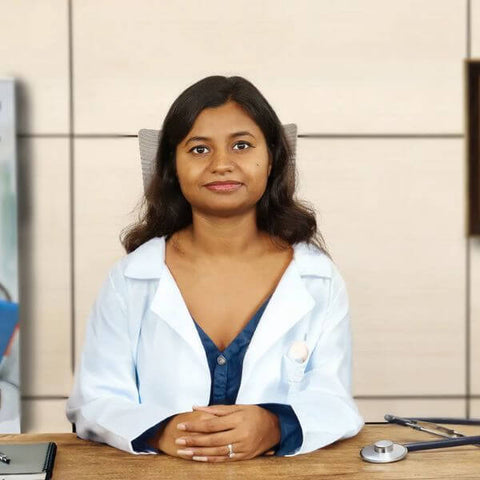
Dr. Pooja Verma
Dr. Pooja Verma is a sincere General Ayurvedic Physician who holds a BAMS degree with an interest in healing people holistically. She makes tailor-made treatment plans for a patient based on the blend of Ayurveda and modern science. She specializes in the treatment of diabetes, joint pains, arthritis, piles, and age-related mobility issues.

